In short, the Acre class were the first modern destroyers built in Brazil. Initially a modified British design with U.S. equipment to replace the six H-class destroyers (called in Brazil the Jurua class) ordered from Britain but requisitioned as WW2 broke out. The design shifted towards a Sims class instead and between complications and relative inexperience of Ilha da Cobras arsenal, multiple delays led to a construction spanning from 1943 to 1949 or even, 1951. They were ready in time when Brazil acquired two ex-Brooklyn class cruisers, diligently escorted until their retirement. Modernized in the early 1960s they were were decommissioned in 1964 and 1973-1974 with a relatively uneventful career. They replaced the 1937 Marcílio Dias-class destroyer and were replaced themselves by modernized Fletcher class ships, the Pará-class destroyers.
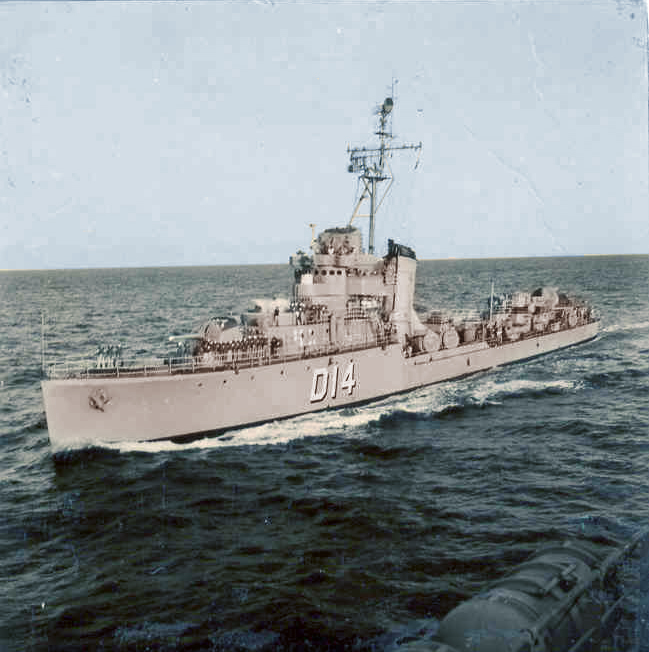
Development
The Acre class were ordered after the war broke out in 1939. At first, a 1938 naval plan asked for six destroyers to be built at the usual supplier, Britain, and an agreement was reached with the British government. Six “J-class” (no relation with the actual British J class) destroyers (Juruá, Javary, Jutahy, Juruena, Jaguaribe and Japurá) were ordered to be built in the United Kingdom. Initially these were earlier H class destroyers. These were an earlier 1934 design, still relatively close to the E-F class.

HMS Hesperus, ex-Juruena in 1942 (IWM).
These were Jurua (later HMS Handy, then Harvester) laid down at Vickers Armstrongs, Barrow on 3 June 1938, launched on 29 September 1939, Javary (later HMS Havant) at J. Samuel White in Cowes, laid down on 30 March 1938, launched prewar on 17 July 1939, Jutahy (later HMS Havelock) laid down on 31 May 1938, launched on 16 October 1939, Juruena (later HMS, Hearty then Hesperus) at John I. Thornycroft & Company, Woolston on 6 July 1938 and launched on 1 August 1939, Jaguaribe (later HMS Highlander) same yard on 28 September 1938 (launched 19 October 1939), Japura (later HMS Hurricane) maid down at Vickers Armstrongs, Barrow on 3 June 1938, launched on 29 September 1939.
In September 1939, the British government requisitioned these submarines and started discussions with the Brazilian Navy. The latter wanted to try and build these in house, with British assistance and weaponry, equipments, and this was accepted. The greatest unknown was if British technical support could be obtained at all and if equipment could be spared from wartime production. However the year 1939 ended as preparations were made, then by mid-1940 it was clear this assistance did not came forward. Eventually, the Brazilian government became weary these destroyers would be built at all, and ceased discussions, turning instead to the US, still neutral in 1940, for assistance.
Engineers at Ilha da Cobras naval arsenal in Rio, the planned builder, wanted to start from the experience gained on the Marcilio Dias class destroyers, loosely based on the Mahan class. They wanted an updated design to start with and obtained an agreement for the plans and details, as well as equipments to build a very different Sims class destroyer class. This implied a complete change from British to American technical support and also meant the new ships would have had different characteristics to the initial British design, leading to many redesigns.
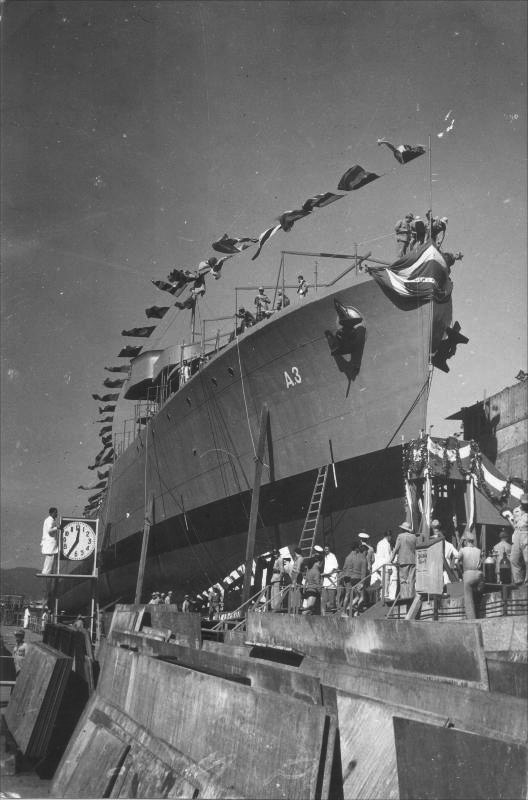
Launch of Amazonas at Ilha da Cobras naval yard and arsenal, Rio de Janeiro, 29 November 1943
This was the start of new delays, wherea the keels were laid down as planned at the arsenal, the first of which being Amazonas on 20 July 1940 and Araguaya the same day. These new ships collectively were called the “A” class, to mark a real difference with the now cancelled J-class. The Sims were obviously completely new animals compared to the previous H-class, but the Brazilian Navy at least gained greater standardization with the Marcilio Dias class (M class), notably for armament, US supplied, and later sensors. The first two M class indeed were launched in July and December 1940, freeing slipways for the new A class. However the new A-class were smaller and had a single funnel, and like the Marcilio Dias class they lacked torpedoes, being pure “gunships”.
Eventually, the new A class were launched in November 1943 (Amazonas and Araguaya) and 30 May 1945 for the remainder three (Acre sub-class) and Araguari on 14 July 1946. They were commissioned in September and November 1949 for the first two and June 1951 for Araguari while the other three Acre class were in December 1951. The elephant in the room to explain delays here, is after the redesign time, by December 1941 the US were at war in turn, and support and parts delivery took a backseat practically all the way to 1946. Starting new ships while depending on foreign suppliers when international tensions are high is never a good idea…
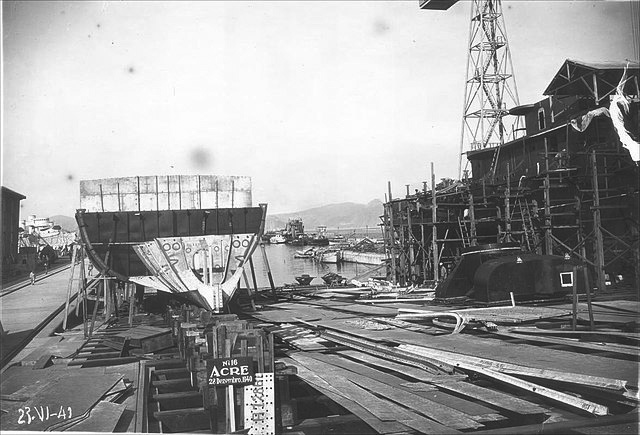
Their career was not very long also. Being essentially 1930s designs they were hopelessely obsolete in 1959. Two were discarded already in 1964 and the remainder four in 1973-74, despite their upgrades. They were replaced by the new P class (Para), essentially modernized Fletcher DDE.
Authors are divided about the class names, and thus, “A” is more convenient. Indeed, many authors called these the “Acre” class based on the alphabetical order whereas Brazil call them, rightly so, the “Amazonas class”. The reason was the first pair was laid down first, launched first and completed first. However iuf based on the launch date alone, it’s Araguaya that should be the class namesake. She was launched on the 24th of November, versus 29 for Amazonas.
Overall, the redesign from an H-class to a Sims class created design complications and redesigns and led to severe limitations. These were considered as hybrid ships, with a reduced available space, radius of action and stability, unlike the better, larger previous Marcilio Dias class, explaining their relatively short service between 13 and 23 years.
Design of the class
Hull and general design
The A class were built with different types of steel. Galvanized steel was used for parts most subjects to corrosion, and medium black steel in common parts and superstructures, as well as high-tensile steel for the structural parts subject to greater stresses. This was the first time in Brazil, and added complexity and delays in cosntruction. The general hull construction called for transverse sections for the main structure with longitudinal reinforcements distributed between various decks, and divided into watertight compartments.

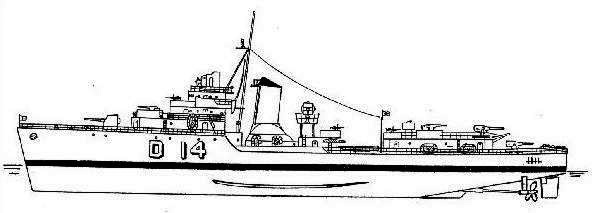
The original Sims class design compared to the A class.
The A class displaced 2,102 tons at full load, 1,805 tons at normal load, and down 1,516 tons if drained and emptied completely. They measured 98.5 meters in total overall, 95.04 meters between perpendiculars, for an, extreme beam rear amidship of 10.06 meters, 10.5 meters at their “molded beam”. They had a decreased waterline beam of 6.096 meters amidships, down to 5.864 meters aft. Mean draught was 2.80 meters at maximum displacement, 2.54 meters at normal displacement and 2.28 meters at very light displacement. Let’s recall there the original Sims class were longer and larger (348 ft 3 in x 36 ft 1 in).
Powerplant
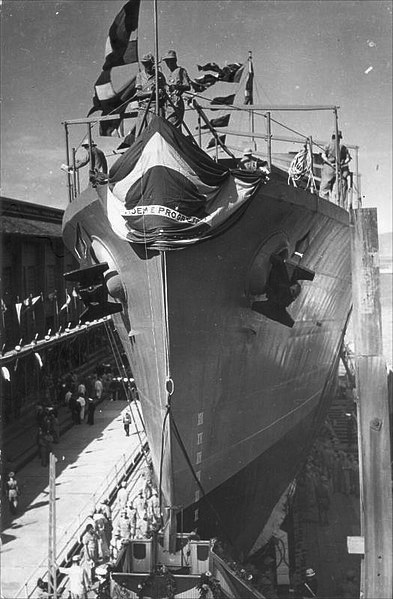 Amazonas, the first in class, was also the only one equipped with two Westinghouse Electric & MFG Co. geared steam turbines, each rated for 17,300 hp, totaling 34,600 hp. Installed port and starboard each consisted of a high-pressure 10-stage action stage and a low-pressure turbine for cruising. The latter was also used for reversing. These drove two 3.126-meter diameter propellers, with a constant pitch at 3.927 meters.
Amazonas, the first in class, was also the only one equipped with two Westinghouse Electric & MFG Co. geared steam turbines, each rated for 17,300 hp, totaling 34,600 hp. Installed port and starboard each consisted of a high-pressure 10-stage action stage and a low-pressure turbine for cruising. The latter was also used for reversing. These drove two 3.126-meter diameter propellers, with a constant pitch at 3.927 meters.
The transmission comprised double-acting reduction gears from General Electric. Like the Sims class, they had three Babcock and Wilcox three-tube express boilers, each with a double smokebox and single firebox, burning standard fuel oil. Amazonas was considered a sub-class, together with the remaing three ships for her class, Apa, Araguari, and Araguaya. Acre is the other sub-class as with Ajuricaba, they were equipped with more powerful 45,000 hp Westinghouse turbines instead.
This made also a difference in speed.
Acre and Ajuricaba were rated for 45,000 shp and the Amazonas cub-class were rated for 34,600 shp total for a top speed of of 33.5 knots for the Acre class and 36 knots for the Amazonas sub-class. Each of the three B&W boiler was located in its own boiler room. Exhasustw were truncated into a single funnel. These were double-effect boilerts with a low-pressure distillation unit (capacity 45,500 liters per day). These were completed by two high-pressure compressors, driven by the steam turbines, with a capacity of 560 dm³/hour and a pressure of 210 kg/cm². These gave the ships an economic speed of 13.5 knots, standard speed of 20 knots and maximum speed of 33.5 knots. For control and maneuvering, the Acre/Amazona class came up with an hydroelectric rudder that could be operated from the bridge, but also as backup from the aft steering station with repeaters from the bridge, and the steering gear compartment as second backup, independently.
Operational range was 3,800 miles at high cruise speed (25 kts), 6000 nm at 15 knots economical speed and 900 miles at top speed of 36 knots. Power generation when the boilers were cold, was provided by two Westinghouse turbo generators rated for 450 volts, capable of 60 cycles per second, three phases, with 240 amps and a power output of 150 kW each, plus a Cummins emergency diesel generator using the same electrical specifications. Being tropical climate operating ships, the Acre class destroyers also received two York Corp. refrigerating machines for the provisions storerooms and two York Corp. refrigerating machines for the ammunitions storage rooms, each forward and aft.
The Acre/Amazonas class also had a crew of 150, and camed equipped with a 26-foot launch powered by a 31 HP diesel engine (capacity 22) and 12 life rafts (capacity 16 men each) plus a 3-meter long rowing barge for supply to shore. There were also life vests storages.
Armament

Original Armament 1949
Originally, the Amazonas class was armed with four 127 mm (5 inches/38) guns of the same type as the M class, as well as four 20 mm/70 Mark 4 machine guns. But new 5-inch/38 were provided in 1944. They were excellent guns for which large ammunition supplies could be procured, long after WW2. Like the M class, the A class lacked torpedo tubes. They were more like gunboats essentially dedicated to escort missions. The 20 mm Oerlikon were considered enough in 1945, but this quickly changed. As completed, they obtained a twin mount, while keeping their four single mounts. They also had two depth charge racks aft at the poop and four depht charge launchers aft on either sizen eight total with circa 60 depth charges in all.
Upgraded armament 1954
The ships were modernized and overhauled between May and July 1954. Their final armament configuration was changed to three 127 mm, 38-caliber but with new dual-purpose NGF guns. These were now two aft Mk 21 open mounts and one forward turreted Mk 30 mount, but also the addition of two automatic twin mounts for 40 mm/60 Mk 1 Mod 6 Bofors, one forward superfiring at “B” position and one aft on the quartederck house. The noverlty was their installation of two triple MK14 Model 12 torpedo tubes banks firing the infamous but now fixed US 21-inch torpedoes.
Two MK6 anti-submarine mortar mounts model 1, one on each side were also mounted in place of the former eight DCTs, and two MK3 depth charge launchers, with capacity for seven DCs, and local or remote control.
Sensors

As completed the ships came with the standard US MK33 fire director model 38, and a MK28 radar model 3 as well as a MK41 rangefinder model 8 and a MK10 calculator model 66B. They had in 1954 a MK2 stabilizing element model 15, and the MKT maneuvering panel model 2 (5-in guns), and two MK51 directors model 2 with two MK14 gyroscopic handles model 8 (for the Bofors AA battery. They also carried two MKT directors model 2, and a MK-T calculator model 2 with two MK5 handles for torpedo control. The mounts hydraulic system were containerized, with local and remote control amidships, one either side.
The Amazonas also had a Combat Information Center (CIC) buried below the bridge. Among others, the mounting of an AN-SPS-4 surface search radar was completed by the AN-SPS-6C air search radar and the AN-SPA-4B air search radar master repeater as well as the VJ-1 surface radar repeater. There was a range indicator and IFF coordinator associated with the air search radar. The UHF transceivers were remotelly controlled. Transmission comprised two radio stations with emitter/receivers working in several frequency bands (medium, high, very high and ultra-high).
Other systems included the QCR-1 sonar, with the BDI-CQA 55098 bearing deviation indicator for ASW combat, and the CAN 55134-A range finder, ET-SQN1 echo sounder. The mast mounted also a RCA DP12 radio direction finder, a surface odometer repeater and Degauss control as well as a gyro repeater, a magnetic steering needle, bottom odometer repeater plus the AN-SPA-4A radar repeater. They could comminucated by flag, and had a main searchlight and two morse lights on the bridge.
So to resume: In 1947-51 from the start they were completed with the SF-1 radar and QCR-1 sonar. After 1955, they had the SPS-4 and SPS-10 radars but kept the QCR-1 sonar.
⚙ Acre specifications |
|
| Displacement | 1,340 long tons (1,360 t) standard, 1,800 long tons (1,829 t) full load |
| Dimensions | 98.45 x 10.67 x 2.59m (323 ft x 35 ft x 8 ft 6 in) |
| Propulsion | 2 shaft Parsons geared turbines, 3 boilers 34,000 hp (25,000 kW) |
| Speed | 35.5 knots (40.9 mph; 65.7 km/h) |
| Range | 450t oil, 6000 nm/15 kts |
| Armament | 4× 1 5 in/38, 1×2 40 mm, 4× 20 mm, 2×3/2×4 21-in TTs, 8 DCs |
| Sensors | SF-1 radar, QCR-1 sonar |
| Crew | 150 |
Career of the Acre class
 Acre (D10)
Acre (D10)
 Acre was laid down on 28 December 1940, launched on 30 May 1945 and completed on 10 December 1951. She was second ship to bear this name in Brazilian service, named after the former Federal Territory of Acre and Acre River, northwest Brazil. In the Tupi-Guarani language, “Acre” means “green river”. As completed these ships were meant to escort larger ships, surveillance missions and ASW only. The 1954-55 upgrade added to this anti-ship capabilities with torpedoes. Acre was the fourth class, as in Brazil she is considered part of the six Amazonas Class vessels, but her engineering plant was different and she remained a sub-class lead ship. Her career was pretty uneventful. Still, she took part in the Task Force mobilized in the so-called “Lobster War” as Brazil protested the illegal capture of lobsters by French fishing vessels in what were considered its territorial waters off, the Northeast region of Brazil. The situyation escalated when French warships arrived to escort the trawlers, other mobilized, but an agreement was found later, sanctioned by the UN. Brazil claim as based on the continentakl shelf, which extended far outside its initial shore-based territorial waters. Today, maritime rights are better established.
Acre was laid down on 28 December 1940, launched on 30 May 1945 and completed on 10 December 1951. She was second ship to bear this name in Brazilian service, named after the former Federal Territory of Acre and Acre River, northwest Brazil. In the Tupi-Guarani language, “Acre” means “green river”. As completed these ships were meant to escort larger ships, surveillance missions and ASW only. The 1954-55 upgrade added to this anti-ship capabilities with torpedoes. Acre was the fourth class, as in Brazil she is considered part of the six Amazonas Class vessels, but her engineering plant was different and she remained a sub-class lead ship. Her career was pretty uneventful. Still, she took part in the Task Force mobilized in the so-called “Lobster War” as Brazil protested the illegal capture of lobsters by French fishing vessels in what were considered its territorial waters off, the Northeast region of Brazil. The situyation escalated when French warships arrived to escort the trawlers, other mobilized, but an agreement was found later, sanctioned by the UN. Brazil claim as based on the continentakl shelf, which extended far outside its initial shore-based territorial waters. Today, maritime rights are better established.
Acre was decommissioned on July 26, 1974, after 1,056 days at sea (not a lot for 23 years, this means 45 days at sea per year on average), and 295,431 miles crossed.
 Ajuricaba (D11)
Ajuricaba (D11)
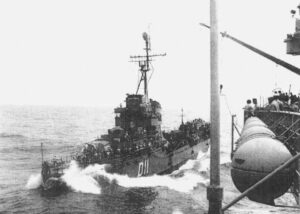 Ajuricaba was laid down on 28 December 1940, launched on 30 May 1945, completed and commissioned in December 1951. Considered the third in class. She was christened on July 14, 1946 by Mrs. Maria Vicentina Novelli, granddaughter of the then President of the Republic, General Eurico Gaspar Dutra. She took part in a Weapons Exhibition on December 21, 1957. First commander was Frigate Captain Didio Santos de Bustamante from July 6, 1955. She was delayed and entered service with the modifications such as three main guns, and four 40 mm Bofors, new radars later retrofitted on earlier ships. She was the first also to leave active service, in 1964, for eletrical issues and budgetary reasons, after just 13 years in service.
Ajuricaba was laid down on 28 December 1940, launched on 30 May 1945, completed and commissioned in December 1951. Considered the third in class. She was christened on July 14, 1946 by Mrs. Maria Vicentina Novelli, granddaughter of the then President of the Republic, General Eurico Gaspar Dutra. She took part in a Weapons Exhibition on December 21, 1957. First commander was Frigate Captain Didio Santos de Bustamante from July 6, 1955. She was delayed and entered service with the modifications such as three main guns, and four 40 mm Bofors, new radars later retrofitted on earlier ships. She was the first also to leave active service, in 1964, for eletrical issues and budgetary reasons, after just 13 years in service.
 Amazonas (D12)
Amazonas (D12)
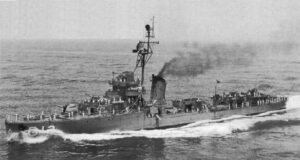 Amazonas was the class lead ship, laid down on 20 July 1940, launched on 29 November 1943 and commissioned on 10 November 1949. She was christened at lainch by Mrs. Rosa Mendonça de Lima.
Amazonas was the class lead ship, laid down on 20 July 1940, launched on 29 November 1943 and commissioned on 10 November 1949. She was christened at lainch by Mrs. Rosa Mendonça de Lima.
She entered service under the Ministerial Notice No. 1,176, dated June 11, 1949 and took part in an armament Exhibition. She initially had the visual callsign A1, later changed to D12. She was also the 7th ship of the name, tribute to the word’s largest river. She replaced a River class Pará-type destroyer which patrolled Guanabara Bay in WWI.
Her active service represented a total of 187,646.97 nautical miles, 721.5 days at sea in patrols, anti-submarine drills and regular UNITA Operations in coordination with the USN and other local navies. She was used also for the transportation of prisoners, reception and escort of the cruiser Tamandaré, and strikes repressions. She was decommissioned on June 19, 1973 at the Rio de Janeiro Navy Arsenal and later BU.
 Apa (D13)
Apa (D13)
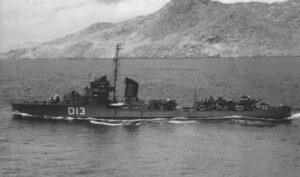 Apa was laid down on 28 December 1940, launched on 30 May 1945 and completed on December 1951. First commander was Frigate Captain Nilo de Figueiredo Costa and later the future Minister of the Navy, Augusto Rademaker, from February 1951 to March 1952. In 1963 with a sister ship and other ships of the Brazilian Fleet, she was mobilized to take part in the “Lobster War” standoff with the French Navy. However afterwards when docked in Recife to unload torpedoes, its electric generators and saltwater distillers failed, and she was decommissioned early in 1964 like Ajuricaba which experiences the same issues.
Apa was laid down on 28 December 1940, launched on 30 May 1945 and completed on December 1951. First commander was Frigate Captain Nilo de Figueiredo Costa and later the future Minister of the Navy, Augusto Rademaker, from February 1951 to March 1952. In 1963 with a sister ship and other ships of the Brazilian Fleet, she was mobilized to take part in the “Lobster War” standoff with the French Navy. However afterwards when docked in Recife to unload torpedoes, its electric generators and saltwater distillers failed, and she was decommissioned early in 1964 like Ajuricaba which experiences the same issues.
 Araguaia (D14)
Araguaia (D14)
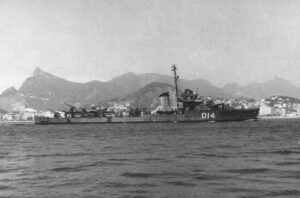 Araguaya was laid down on 20 July 1940, launched on 24 November 1943 and completed on 3 September 1949. The name signified “River of the Macaws” or “tame parrot” in old Tupi. She was a tribute to the namesake Brazilian river in the state of Goiás and second of the name, after the Mixed Gunboat Araguaia (1858). Unfortunately no logs for her service. She was decommissioned in 1974 after 23 years service.
Araguaya was laid down on 20 July 1940, launched on 24 November 1943 and completed on 3 September 1949. The name signified “River of the Macaws” or “tame parrot” in old Tupi. She was a tribute to the namesake Brazilian river in the state of Goiás and second of the name, after the Mixed Gunboat Araguaia (1858). Unfortunately no logs for her service. She was decommissioned in 1974 after 23 years service.
 Araguarí (D15)
Araguarí (D15)
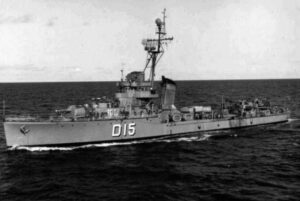 Araguarí was laid down on 28 December 1940, launched on 14 July 1946 and commissioned on 23 June 1951. The name derived from a stingray found in the Amazon river, and of macaw while being also a tribute to the city in the state of Minas Gerais and river in the state of Pará, third of the name in the Brazilian Navy, after a gunboat and a Torpedo Boat. Again, no logs. She was decommissioned in 1974 after 23 years of service. None of the class was saved as a museum ship. These were ships with little technical value, being a relatively failed and short lived design, with uneventful careers.
Araguarí was laid down on 28 December 1940, launched on 14 July 1946 and commissioned on 23 June 1951. The name derived from a stingray found in the Amazon river, and of macaw while being also a tribute to the city in the state of Minas Gerais and river in the state of Pará, third of the name in the Brazilian Navy, after a gunboat and a Torpedo Boat. Again, no logs. She was decommissioned in 1974 after 23 years of service. None of the class was saved as a museum ship. These were ships with little technical value, being a relatively failed and short lived design, with uneventful careers.
Read More/Src
Books
Destroyers of the Brazilian Navy: Acre Class Destroyers, Garcia Class Frigates of the Brazilian Navy, Books LLC , 2010.
Hartmut Ehlers. Brazylijskie niszczyciele typu „M” i „A”. „Okręty Wojenne”. Nr 5/2008 (91). Wydawnictwo Okręty Wojenne, Tarnowskie Góry.
Robert Gardiner, Roger Chesneau: Conway’s All the World’s Fighting Ships 1922–1946. London: Conway Maritime Press, 1980.
Robert Gardiner, Stephen Chumbley: Conway’s All The World’s Fighting Ships 1947-1995. Annapolis: Naval Institute Press, 1996.
Antony Preston (red.): Jane’s Fighting Ships of World War II. London: Studio Editions, 1989.
Links
navypedia.org acre.htm
naval.com.br/
web.archive.org/ fotosdefatos.com
web.archive.org on repositorio.ufscar.br/
web.archive.org segredosdomundo.r7.com/
on naval.com.br
web.archive.org scielo.br/
arquivodamarinha.dphdm.mar.mil.br/
on en.wikipedia.org
commons.wikimedia.org

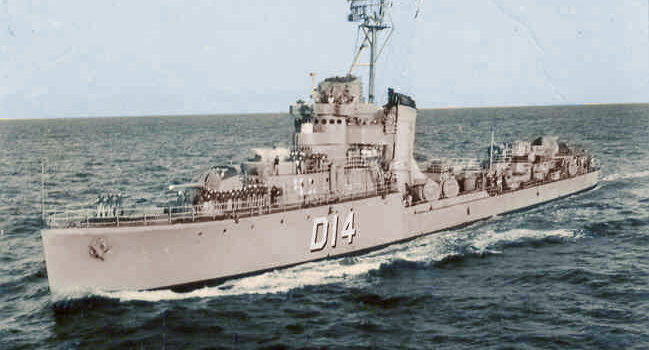


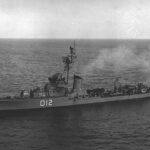
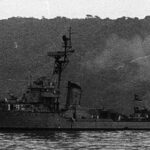
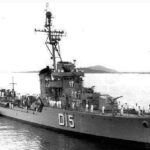
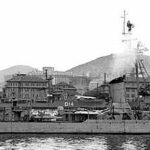
 Latest Facebook Entry -
Latest Facebook Entry -  X(Tweeter) Naval Encyclopedia's deck archive
X(Tweeter) Naval Encyclopedia's deck archive Instagram (@navalencyc)
Instagram (@navalencyc)





 French Navy
French Navy Royal Navy
Royal Navy Russian Navy
Russian Navy Armada Espanola
Armada Espanola Austrian Navy
Austrian Navy K.u.K. Kriegsmarine
K.u.K. Kriegsmarine Dansk Marine
Dansk Marine Nautiko Hellenon
Nautiko Hellenon Koninklije Marine 1870
Koninklije Marine 1870 Marinha do Brasil
Marinha do Brasil Osmanlı Donanması
Osmanlı Donanması Marina Do Peru
Marina Do Peru Marinha do Portugal
Marinha do Portugal Regia Marina 1870
Regia Marina 1870 Nihhon Kaigun 1870
Nihhon Kaigun 1870 Preußische Marine 1870
Preußische Marine 1870 Russkiy Flot 1870
Russkiy Flot 1870 Svenska marinen
Svenska marinen Søværnet
Søværnet Union Navy
Union Navy Confederate Navy
Confederate Navy Armada de Argentina
Armada de Argentina Imperial Chinese Navy
Imperial Chinese Navy Marinha do Portugal
Marinha do Portugal Mexico
Mexico Kaiserliche Marine
Kaiserliche Marine 1898 US Navy
1898 US Navy Sovietskiy Flot
Sovietskiy Flot Royal Canadian Navy
Royal Canadian Navy Royal Australian Navy
Royal Australian Navy RNZN Fleet
RNZN Fleet Chinese Navy 1937
Chinese Navy 1937 Kriegsmarine
Kriegsmarine Chilean Navy
Chilean Navy Danish Navy
Danish Navy Finnish Navy
Finnish Navy Hellenic Navy
Hellenic Navy Polish Navy
Polish Navy Romanian Navy
Romanian Navy Turkish Navy
Turkish Navy Royal Yugoslav Navy
Royal Yugoslav Navy Royal Thai Navy
Royal Thai Navy Minor Navies
Minor Navies Albania
Albania Austria
Austria Belgium
Belgium Columbia
Columbia Costa Rica
Costa Rica Cuba
Cuba Czechoslovakia
Czechoslovakia Dominican Republic
Dominican Republic Haiti
Haiti Hungary
Hungary Honduras
Honduras Estonia
Estonia Iceland
Iceland Eire
Eire Equador
Equador Iran
Iran Iraq
Iraq Latvia
Latvia Liberia
Liberia Lithuania
Lithuania Mandchukuo
Mandchukuo Morocco
Morocco Nicaragua
Nicaragua Persia
Persia San Salvador
San Salvador Sarawak
Sarawak Uruguay
Uruguay Venezuela
Venezuela Zanzibar
Zanzibar Warsaw Pact Navies
Warsaw Pact Navies Bulgaria
Bulgaria Hungary
Hungary

 Bundesmarine
Bundesmarine Dutch Navy
Dutch Navy Hellenic Navy
Hellenic Navy Marina Militare
Marina Militare Yugoslav Navy
Yugoslav Navy Chinese Navy
Chinese Navy Indian Navy
Indian Navy Indonesian Navy
Indonesian Navy JMSDF
JMSDF North Korean Navy
North Korean Navy Pakistani Navy
Pakistani Navy Philippines Navy
Philippines Navy ROKN
ROKN Rep. of Singapore Navy
Rep. of Singapore Navy Taiwanese Navy
Taiwanese Navy IDF Navy
IDF Navy Saudi Navy
Saudi Navy Royal New Zealand Navy
Royal New Zealand Navy Egyptian Navy
Egyptian Navy South African Navy
South African Navy






























 Ukrainian Navy
Ukrainian Navy dbodesign
dbodesign